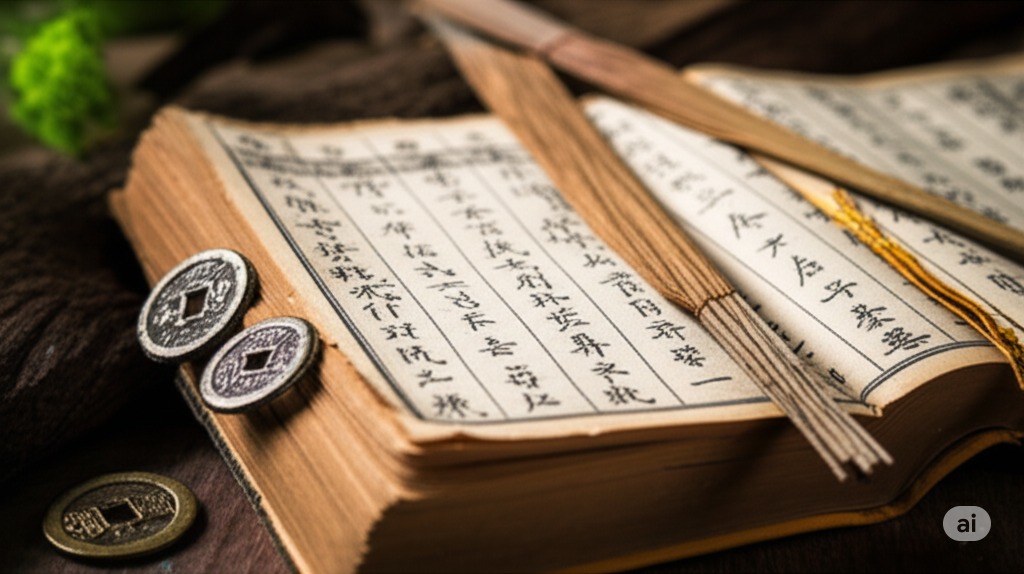The Modern Method
In this approach:
- Assign a value of 3 to each coin that lands Heads.
- Assign a value of 2 to each coin that lands Tails.
After tossing three coins, the sum of their values determines the nature of the line:
- Sum of 9 (three Heads: 3+3+3=9): This yields a Changing Yang line (represented by a solid line with a circle, 'o').
- Sum of 8 (two Heads + one Tail: 3+3+2=8): This results in an Unchanging Yin line (a broken line '-- --').
- Sum of 7 (one Head + two Tails: 3+2+2=7): This gives an Unchanging Yang line (a solid line '----').
- Sum of 6 (three Tails: 2+2+2=6): This produces a Changing Yin line (a broken line marked with an 'x').
In this system, the combination of heads and tails directly determines the line's nature (Yin/Yang, Changing/Unchanging) and its numerical value (6, 7, 8, or 9), which is then used to construct the hexagram.
The Traditional Method
The alternative method employs a traditional coin casting method. Traditionally, the I-Ching uses three coins to determine each line of the hexagram. Each outcome corresponds to a specific line type and numerical value:
- Three Heads: Resulting in a Changing Yin line. This has a numerical value of 9.
- Three Tails: Resulting in a Changing Yang line. This has a numerical value of 6.
- Two Heads + One Tail: Resulting in an Unchanging Yang line (solid). This has a numerical value of 7.
- Two Tails + One Head: Resulting in an Unchanging Yin line (broken). This has a numerical value of 8.
Ancient Chinese texts describe these numerical associations. For example:
"今則用錢。以三少為重錢,重錢則九也。三多為交錢,交錢則六也。兩多一少為單錢,單錢則七也。兩少一多為拆錢,拆錢則八 也。"
While this method uses a different numerical framework to derive the line types from the coin tosses, it ultimately arrives at the same fundamental line types (Yin, Yang, Changing Yin, Changing Yang).
Divination Methods: Synchronicity and Chance
Regardless of the specific rules (whether the modern method used by this site or the alternative numerical assignment), the coin casting method introduces synchronicity and chance into the divination process. This allows the patterns of the universe, as revealed through the coin toss, to offer guidance to your question.
The changing lines hold particular significance, often highlighting areas of importance, dynamic energy, or transition within your situation.
The Oracle's Perspective: Consistency Matters
Ultimately, the I-Ching is a tool for self-reflection and guidance. While different traditions exist for casting and interpreting coins, the oracle itself remains impartial. Consistency is paramount. Whichever method resonates with you, apply it consistently to each of the six lines of your hexagram. This ensures a cohesive and meaningful reading based on your chosen system.
